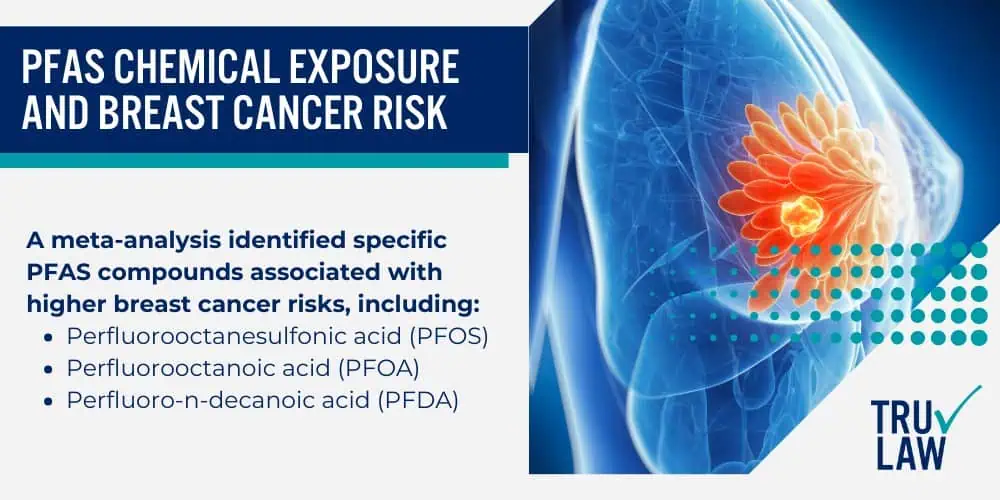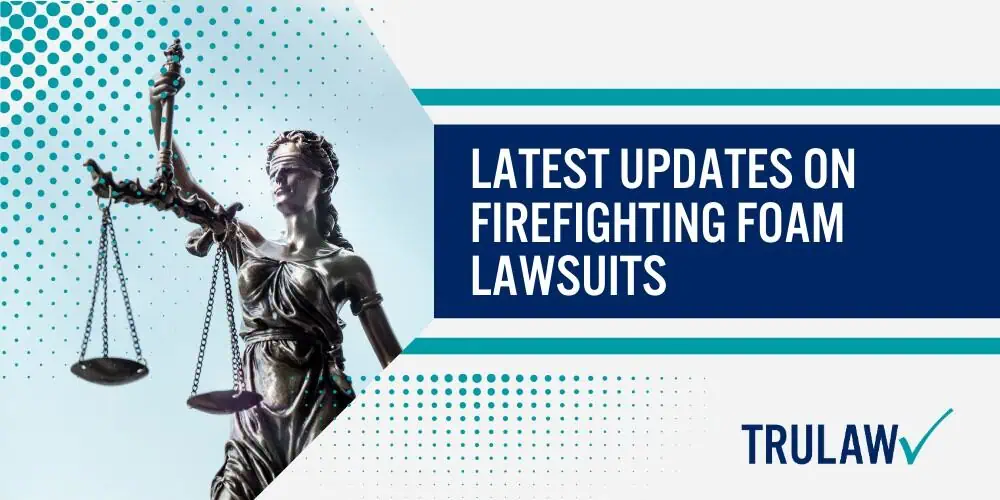Exposure to PFAS chemicals found in AFFF firefighting foam has been associated with an increased risk of developing breast cancer and other serious health conditions.
Research has shown that certain PFAS chemicals, often referred to as “forever chemicals,” may be linked to elevated cancer risks, including breast cancer.

A meta-analysis identified specific PFAS compounds associated with higher breast cancer risks, including:
- Perfluorooctanesulfonic acid (PFOS)
- Perfluorooctanoic acid (PFOA)
- Perfluoro-n-decanoic acid (PFDA)
In another study conducted by researchers at the University of California, Berkeley, female firefighters in San Francisco were found to have a higher risk of health effects from PFAS exposure compared to women in other professions.
This highlights the potential dangers of long-term exposure to these chemicals, particularly in firefighting professions.
Common symptoms of breast cancer to watch for include, but are not limited to:
- Changes in the size or shape of the breast
- Pain or pulling in of the nipple
- Thickening or swelling in part of the breast
- Nipple discharge that isn’t breast milk (including blood)
- Redness or flaky skin near the nipple or breast area
- A new lump in the breast or underarm area
- Pain in any part of the breast
- Irritation or dimpling of the skin on the breast












